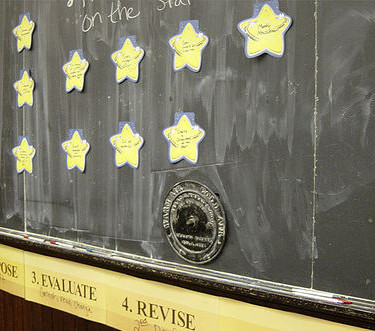Top of the class this week:
Eric Toshalis brings both Foucault and Bourdieu to bear on the world of teacher education and the role of discipline in this world. Here’s the abstract:
This study examines how pre-service teachers experience being disciplined by their training and trainers, and how that discipline is reproduced in their relationships with students. Using Foucauldian and Bourdieuian frameworks to explore pre-service teachers’ disciplinary experiences in a US teacher-education programme, this study explores how participants recreate and resist in their teaching four mechanisms of discipline: surveillance, classification, examination, and initiation. With only nascent skills in instructional design and little opportunity to develop culturally responsive modes of interaction, these teachers often default to discipline as a way of coping with what they deem to be ‘rude’ and ‘off-task’ students. Increasingly obsessed with the necessity to maintain class control more than inspire achievement, participants often fixate on discouraging misbehaviour more than promoting learning, a practice that produces symbolic violence.
This is a must-read for teacher educators and also for those who are concerned about the role of discipline in schools. What originally caught my attention was the use of both Foucault and Bourdieu – why so? Toshalis argues that Bourdieu’s concept of symbolic violence effectively fills a gap left in Foucault’s notion of disciplinary mechanisms (surveillance, classification and examination). According to Toshalis, the prevalence of symbolic violence in the classroom allows these mechanisms to function as instruments of control. This quote from Bourdieu gives an indication as to why this might be the case:
the ways of looking, sitting, standing, keeping silent, or even of speaking (‘reproachful looks’ or ‘tones’, ‘disapproving glances’ and so on) are full of injunctions that are powerful and hard to resist precisely because they are silent and insidious, insistent and insinuating (Bourdieu, 1991).
This theoretical framework is a plus point of the research – I would also draw the attention of the reader to the conclusions – conclusions that have implications for understandings of power and control in both sets of classrooms (those of the teacher and the teacher educator):
For the student-teacher, decades of schooling and training culminate in a symbolic vertical move from student to teacher, from product to producer, from assessed to assessor, from classified to classifier, from initiated to initiator— from disciplined to discipliner. Rarely recognized in this process of being disciplined as discipliners is the possibility that the interns’ default to discipline and their (re)creation of hierarchical order may inadvertently generate more resistance as students act out against rigid and often arbitrary boundaries (while being told their educational context is ostensibly designed to support exploration). If schools and teacher-education programmes persist in disempowering their students and interns in the manner suggested in this study, they will necessarily produce teachers who conflate disempowerment with learning. And as long as learning means learning to be disciplined, we as teacher educators will be training our teachers to control students rather than to inspire them.











And as to how similar concerns apply to FE and HE….?